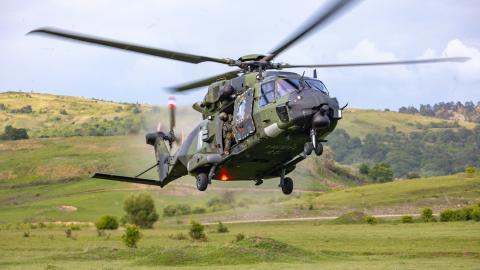Sten Rynning's book is a thorough and well-sourced account of how NATO has played a key role in transatlantic relations. Rynning convincingly argues that NATO has thrived because it is more than a treaty-based alliance with mutual security guarantees—these types of alliances tend to dissolve as different threat perceptions and security interests call into question their usefulness. Rynning's liberal reading of NATO's history emphasizes the alliance's democratic foundations and the extent to which free counsel is empowering, but hard to organize. Hence, NATO has often been threatened by dissolution due to differences over how to manage adversaries and how to balance the control and delegation that the US has sought from its European allies. Rynning argues that NATO has survived because the will to live ‘free and allied’ trumped any national desire to stand out or be exempted (p. 12).
The 1967 Harmel Report added the management of European security writ large to NATO's original purpose of defending member states. Rynning believes that a new Harmel report would help NATO overcome the current conundrum of how to enhance Europe's role in the alliance. It would be particularly helpful in finding a balanced approach to conventional defence and nuclear deterrence and in clarifying the road to Ukrainian alliance membership. The idea of a new Harmel report is spot on. Europe and NATO's role in transatlantic security is again hotly debated, and yet, despite a plethora of summits, the way ahead remains unclear. However, since 1967, as Rynning points out, US strategic priorities have changed, and China and the Indo-Pacific have moved to the top of the US security agenda. Russia's invasion of Ukraine has not stopped this tectonic change, and therefore a Harmel process may result in further institutional disintegration and paralysis. A safer bet may be to make use of existing resources and mechanisms to demonstrate NATO's continued relevance. For instance, the alliance has expanded its scope to include the cyber and space domains; it has designated China as a challenge in its 2022 Strategic Concept; and it is enhancing cooperation with partners in the Asia–Pacific region, including Australia, Japan, New Zealand and South Korea.
Moreover, there is a question about whether the current debates on Europe and NATO's role are just another hurdle to be overcome, or whether the existing problems will spell the end of NATO. Taking Rynning's historical account into the future, a couple of key debates could be addressed to shed light on NATO's status as the ‘world's most important alliance’ and whether the alliance itself is becoming history. For example, did NATO's 1999 intervention in Kosovo constitute a breach of international law that discredited the alliance's commitment to liberal values? If the answer is yes, did the transatlantic alliance cause lasting damage to the source of its strength and cohesion? And, with regard to institutional reform, the European Union, not NATO, stands out as the only post-Second World War liberal multilateral institution that has limited the role of consensus to speed up decision-making. Does that make the EU better prepared to take on a greater security role, as the US demands that its European allies accept greater defence responsibilities? What are the implications for NATO's relevance if new security institutions emerge? Do the many trilateral and bilateral agreements, such as the ones between US–Japan–South Korea and France–India–United Arab Emirates, signify a new world order? And does decision-making in this new world order require forums with a more limited agenda and membership?
Perhaps NATO's role in the Arctic reveals the challenges that the transatlantic alliance is facing in order to remain central to transatlantic security. NATO does not have an Arctic strategy, although the region is a NATO–Russia maritime borderland. Meanwhile, only Norway—out of six Arctic NATO members with defence forces—seems committed to acquiring capabilities that constitute a credible deterrent to Russia's regional force posture. Widespread unwillingness to invest in Arctic capabilities is easily explained: investments in capabilities such as ice-strengthened navy vessels do not count as contributions to NATO's capabilities targets. The alliance's focus on pushing member states to spend two per cent of their GDP on defence comes at the cost of Arctic security. Russia is aware of the gaps in NATO's ability to defend the supply line between North America and Europe that runs through the Greenland–Iceland–UK gap and along Norway's coastline. This is not to say that transatlantic allies should engage in a massive military build-up that risks provoking a military response from Russia. However, NATO should encourage the acquisition of capabilities needed for credible deterrence.
Although it would have been interesting to read more about the current dilemmas that NATO faces as a transatlantic security provider, the book remains true to its remit as a history of the alliance. The overall impression is of a well-documented and well-argued exposition. Rynning's book carries important lessons about how past crisis management has strengthened transatlantic alliance relations.



















